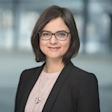
dormakaba Editorial Team

Stephanie Ossenbach
Stephanie is an environmental scientist and responsible for driving the sustainability strategy at dormakaba. With her many years of experience, she is committed to the continuous improvement of social and environmental management and how the company contributes to the UN Sustainable Development Goals.
Related articles

Society
Catastrophic Wildfires: Can Technology Anticipate and Prevent Them?
When a natural disaster occurs, the recurring question is: "Could it have been avoided?" Technology plays a crucial role in our response.

Urbanization
Cheonggyecheon: How a Reclaimed River Brought Life to Seoul
South Korea's story is one of phenomenal economic growth and rapid urbanization. Following the devastating Korean War between 1950 and 1953, in just a few short decades, Seoul transformed from a war-torn city into a bustling megacity, as South Korea flourished as a global leader in technology and innovation.

Society
5 Iconic Roles of Doors in Science Fiction
Doors serve a dual purpose in architecture, blending function and form. But in literature—and particularly in science fiction—they take on deeper symbolic meaning.